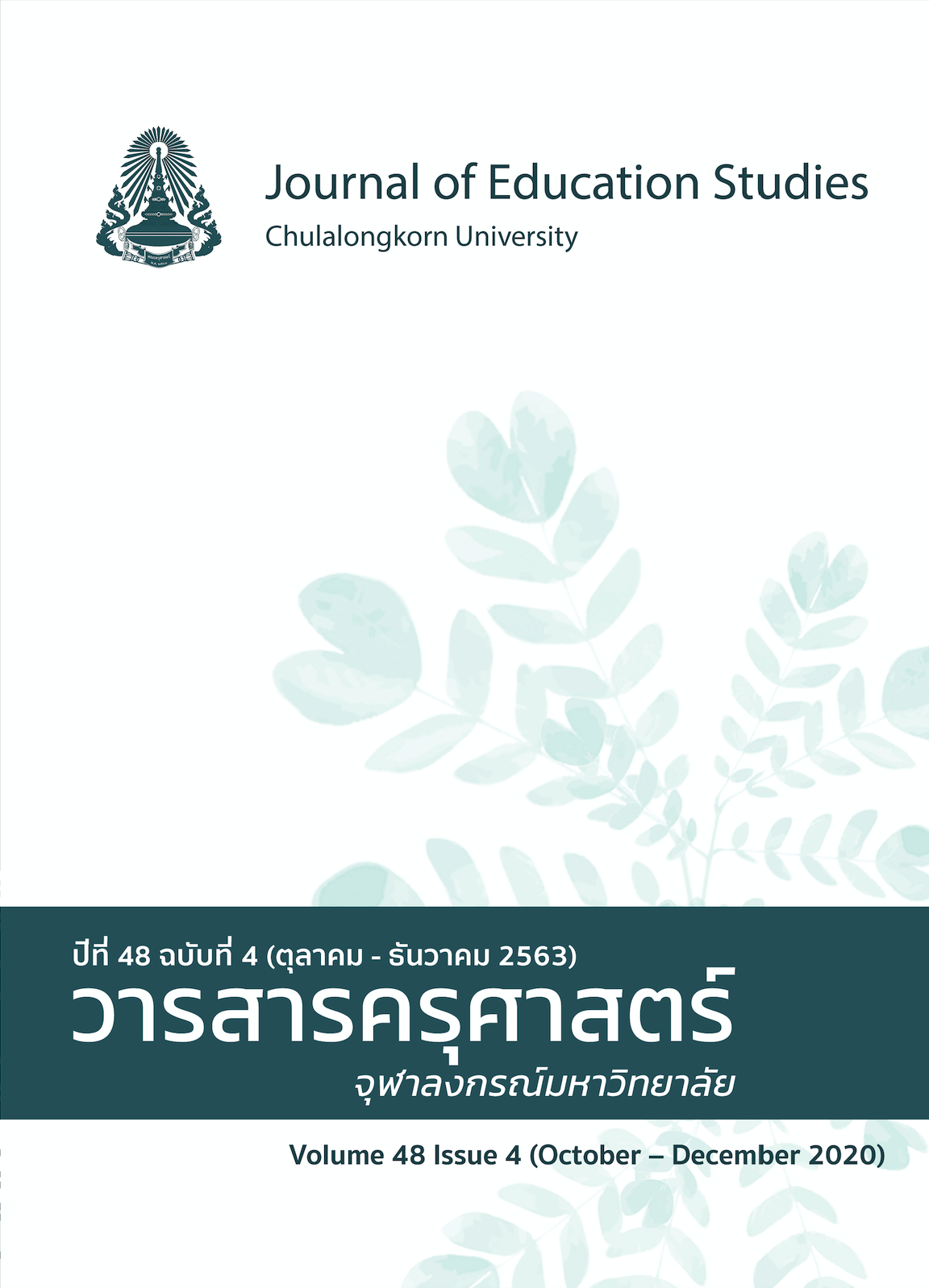Development of an Instructional Process Based on Authentic Learning to Enhance Mathematical Problem-solving Abilities of Elementary School Students in Phetchaburi
Keywords:
mathematical problem-solving, authentic learning, elementary school studentsAbstract
This research aimed to develop and study the effectiveness of an instructional process based on authentic learning to enhance mathematical problem-solving abilities of elementary school students in Phetchaburi. This research and development based study was divided into 2 phases; the first phase comprised the instructional process development based on authentic learning, while the second phase consisted of the instructional process experiment. The sample group comprised 62 students divided into two groups, with 32 students in the experiment group and 30 students in the control group. The tool used for data collection was an assessment form for mathematical problem-solving ability. The result show that 1) The developed instructional process consists of 6 steps: set a real life situation, study the data of a given situation, putting into action and solve the problem by using a group process, discuss and share solutions, conclude and form problem-solving framework, and, finally, extend knowledge to embrace further implications 2) The experiment group indicated a higher average score in mathematical problem-solving ability in posttest than did the control group, at significance level of .05.
References
ทิศนา แขมมณี. (2555). ศาสตร์การสอน : องค์ความรู้เพื่อการจัดกระบวนการเรียนรู้ที่มีประสิทธิภาพ. สำนักพิมพ์แห่งจุฬาลงกรณ์มหาวิทยาลัย.
สถาบันทดสอบทางการศึกษาแห่งชาติ. (2562). ผลการสอบวัดคุณภาพระดับชาติ ปี 2561. สำนักงานคณะกรรมการการศึกษาขั้นพื้นฐาน. http://bet.obec.go.th/nt/(Country).html
สถาบันส่งเสริมการสอนวิทยาศาสตร์และเทคโนโลยี. (2559). สรุปผลการประเมิน PISA 2015 วิทยาศาสตร์ การอ่าน และคณิตศาสตร์. https://pisathailand.ipst.ac.th/pisa2015summaryreport.html
อัมพร ม้าคนอง. (2546). คณิตศาสตร์:การสอนและการเรียนรู้. สำนักพิมพ์แห่งจุฬาลงกรณ์มหาวิทยาลัย.
ภาษาอังกฤษ
Audrey, C. R. (2006). Editorial: The components of authentic learning. Journal of Authentic Learning, 3(1), 1-10.
Blackburn, J. (2001). Authentic learning and teacher evaluation. http://www.JUEDNE/!!J.html
Brown, S. I., & Walter, M. (2005). The art of problem posing. Lawrence Erlbaum Associates.
Contreras, J. (2005). By way of introduction: Posing and solving problems: the essence and legacy of mathematics. Teaching Children Mathematics, 12(3), 115-116.
Gordon, R. (1998). A curriculum for authentic learning. The Education Digest.
Kennedy, L. M., & Tipps, S. (1994). Guiding children learning of mathematics. Wadsworth.
Lombardi, M. M. (2007). Authentic learning for the 21st century: An overview. Educause Learning Initiative.
Lynn, C. (1993). Some factors that impede or enhance performance in mathematical problem solving. Journal for Research in Mathematics Education, 24(2), 167-171.
Morse, J. M. (1997). Learning to drive from a manual. Qualitative Health Research, 7(2), 181–183.
National Council of Teachers of Mathematics [NCTM]. (2005). Professional standards for teaching mathematics. The National Council of Teachers of Mathematics.
Oers, B., & Wardekker, W. (1999). On becoming an authentic learner: Semiotic activity in the early grades. Journal of Curriculum Studies, 31(2), 229-249.
Polya, G. (1963). On learning, teaching, and learning teaching. The American Mathematical Monthly, 70(6), 605-619.
Reeves, T. C. (2002). How do you know they are learning?: The importance of alignment in higher education. International Journal of Learning Technology, 2(4), 302–304.
Sathya, S. (1994). Mathematics through problem solving. Margaret Taplin Institute of Sathya Sai Education.




